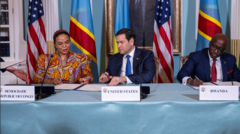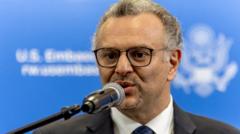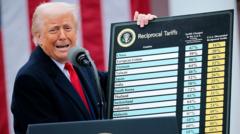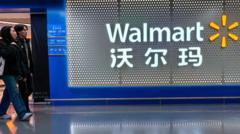The ongoing conflict in the Democratic Republic of Congo, particularly under the control of the M23 rebel group, highlights the complex relationship between mobile technology and the mining of tantalum, a crucial metal for electronic devices. As the M23 earns substantial revenue from coltan mining, questions arise about the traceability of these conflict minerals and their role in funding violence. With tech companies facing scrutiny over their supply chains, the situation reflects a broader issue of responsibility in sourcing materials from conflict zones.
The Hidden Costs of Technology: Tantalum, Conflict, and Supply Chains in the DR Congo

The Hidden Costs of Technology: Tantalum, Conflict, and Supply Chains in the DR Congo
As conflict rages in the Democratic Republic of Congo, the tantalum used in smartphones and electronics is extracted from war-torn regions, raising ethical concerns about its supply chain.
The tantalum found in smartphones and other electronic devices often comes from conflict-ridden areas in eastern Democratic Republic of Congo (DR Congo), specifically where the M23 rebel group controls significant mining operations. This blue-grey metal, critical for energy storage in capacitors, is mainly sourced from DR Congo, which supplies over 40% of the global supply. Amidst a backdrop of escalating violence, highlighted by the M23's assault on Goma, the strategic importance of tantalum has come into question, considering its ties to ongoing civil unrest.
Initially founded to protect an ethnic group, the M23 has evolved into a powerful actor in the region's mineral trade, seizing control of areas like Rubaya that are rich in coltan—the ore that contains tantalum. The group has established a "state-like administration," creating a taxing system on miners and traders that reportedly generates around $800,000 monthly, essentially financing the rebellion through mineral exploitation. The complexity of informal mining operations in DR Congo complicates efforts to regulate and monitor the origin of these minerals.
Attempts have been made to certify the legitimacy of these minerals through initiatives like the Innovative Tin Supply Chain Initiative (Itsci) and legislation such as the Dodd-Frank Act in the U.S., aimed at mitigating trade in conflict minerals. However, experts highlight significant weaknesses in the certification process due to the fragmented nature of small-scale mining, potential corruption among local authorities, and the challenge of tracing mineral origins once they are transported.
Notably, Rwanda's involvement in the coltan supply chain underscores a significant dynamic, as it is believed to play a role in facilitating the flow of uncertified minerals across borders. This complicates the situation further, as Rwanda's coltan exports have risen dramatically, raising concerns about contamination of global supply chains with conflict minerals sourced from DR Congo.
While some tech giants, like Apple, have begun to disentangle themselves from sourcing materials from this contentious region, questions remain about other companies and the extent of their awareness regarding the origins of their materials. The Congolese government has pushed back against this issue by filing legal claims against these companies for their alleged complicity in using conflict minerals.
As consumers become increasingly aware of the ethical implications of their technology, the need for transparency and accountability in the supply chains of electronics becomes ever more critical. As the conflict in DR Congo persists, how the tech industry adapts to these challenges will not only influence corporate practices but will also shape the future dynamics of international supply chains tied to conflict and resource extraction.


















